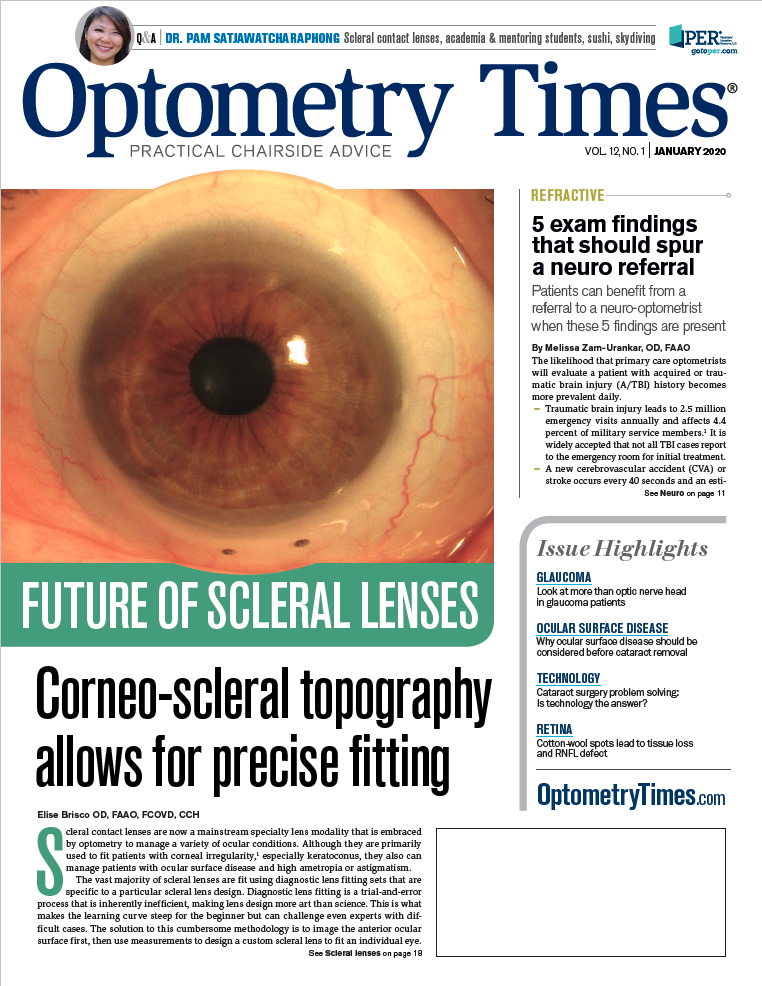Cataract surgery problem solving: Is technology the answer?
New techniques and technologies are expanding the optometrist’s role in cataract surgery

Cataract surgery may be common, but managing complications can be challenging for ODs. Each year, new and old technology is adopted and reimagined to explore the best surgical approaches to cataract surgery. The goal is to improve safety, speed and simplicity to make it safer, faster, and easier.
This year has been no different, and Clark Chang, OD, MSA, MSc, FAAO; and Jim Owen, OD, MBA, FAAO, explored some of the complications and solutions during their lecture on the subject at Las Vegas’s Vision West Expo 2019.
Related: Managing dry eye key to patient satisfaction after cataract, refractive surgeries
Advantages of laser-assisted cataract removal
Although both femtosecond lasers and manual cataract removal each have advantages, Dr. Owen says that the two have noteworthy distinctions.
“Cataract surgery is five steps, the laser can be three,” Dr. Owen says.
The primary advantage of the femtosecond laser is precision. When compared to manual surgical methods, the femtosecond laser may offer better wound closure and less endophthalmitis, he says.
“If you can get better closure and better sealing, you get less endophthalmitis.”
This supports the optometrist’s goal of minimizing pro-inflammatory mediators during any type of refractive surgery, Dr. Chang says.
“That is going to eventually lead to quicker recovery for our patients,” he says.
Related: Measurements matter in cataract surgery, the new refractive procedure
Reduce operative complications
The femtosecond laser also offers advantages for managing capulorhexsis-a key challenge in cataract management.
“Believe it or not, capsulorhexis always has been touted as the hardest step in cataract extraction,” Dr. Owen says.
Dr. Chang described the reasons why a well-performed capsulorhexis can be crucial to good Cataract surgery outcome. In addition to lens capsule being very thin, not knowing the level of adherence between cortex and capsule also make it challenging to obtain a well circumscribed and tear-free capsulorhexis. Once you have capsular tear that may extend to the posterior capsule, the risks of vitreous loss and even endophthalmitis significantly increases.
The laser-assisted cataract procedure subverts many of these challenges.
“The femtosecond laser gets a perfectly concentric circle, perfectly centered,” Dr. Owen says.
He also details new methodologies to come, such as the Zepto cataract capsulotomy system.
But optometrists are not limited to referring patients for one surgical methodology over the other, says Dr. Chang. Many surgical practices use a combination of technologies, such as femtosecond laser to assist in lens defragmentation in order to reduce the overall ultrasound energy during subsequent phacoemulsification. Less mechanical energy in the eye means less collateral tissue damages and lowered inflammatory induction; hence, quicker recovery and potentially better visual outcome.
“It doesn’t always have to be 100 percent femtosecond laser,” he says.
But, like any procedure, complication management starts at the beginning of the procedure. Dr. Owen cautions ODs to keep this in mind.
“Making sure lids and lashes are as clean as possible and as healthy as possible, pre-operatively, is important,” he says.
Related: New guidelines in OSD evaluation before surgery
Setting patient expectations
There is a large, fast-growing market for cataract procedures. People are living longer and working longer careers, presenting changes in the way optometrists deliver cataract care.
“The patient is definitely different, so we have to approach it a little differently,” Dr. Owen says.
Chief among these developments changes is the way ODs manage patient care, from the earliest pre-operative appointments to post-surgical follow- ups. Primarily, Dr. Owen says that optometrists need to start prioritize thinking of cataract management in terms of vision clarity.
“I think ODs being involved in the refractive portion of this is crucial for patient outcomes,” he says.
ODs need to walk patients through the process and make sure that patients’ expectations are clear from the beginning. Although the procedure is common and low risk, patients are often concerned about eye surgery. ODs will need to mitigate these concerns in the patient’s early consultations.
Overall, it’s important for the patient to have confidence in his OD as he neuroadapts during post-operative care.
“That’s probably the most important piece,” Dr. Owen says.
More by Greg and Marek: Unlock the potential of refractive surgery

Newsletter
Want more insights like this? Subscribe to Optometry Times and get clinical pearls and practice tips delivered straight to your inbox.